The history of The 519 is the story of Toronto’s 2SLGBTQ+ experience, a tale of inspiration and community, of speaking out against injustice and coming together to celebrate great progress. Today, the 2SLGBTQ+ experience extends well beyond The Village, and we continue to evolve in response to community need and through the leadership and vision of our members, staff, supporters, and volunteers.
Early 1970s
The building at 519 Church Street is condemned but dedicated neighbours in the North Jarvis Community Association block its demolition and begin efforts to turn the building into a community centre.
1975
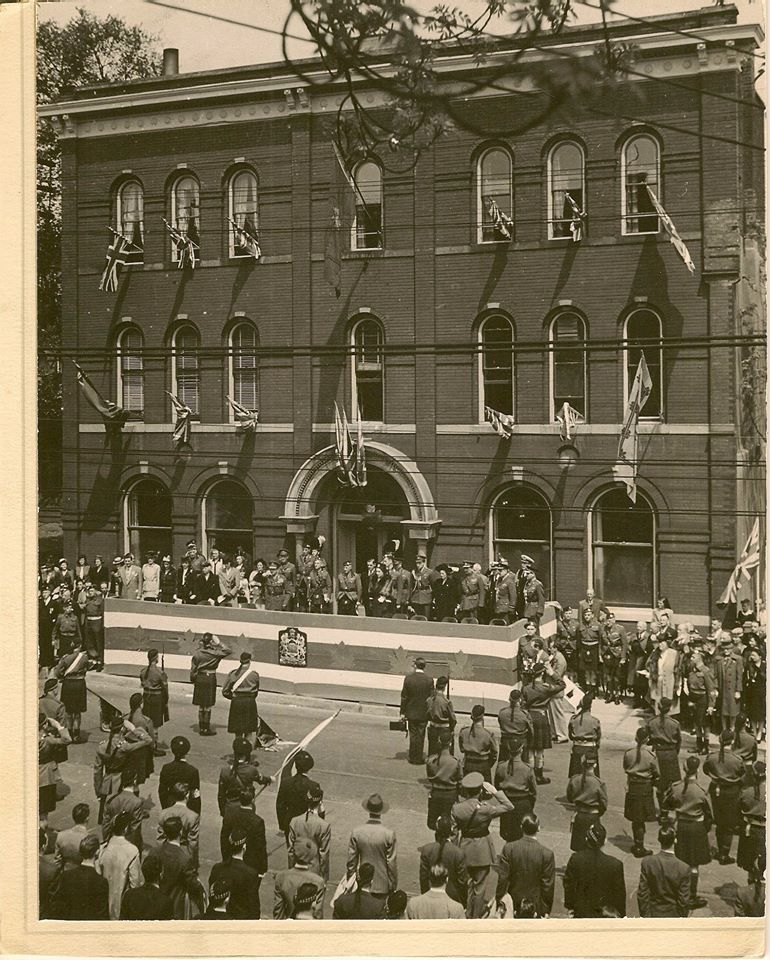
The City of Toronto purchases the building to create The 519 Church Street Community Centre and Cawthra Square Park, the first centre where programming is controlled by the community through a volunteer board of directors.
1976
The 519 Board receives an application from Huntley Youth Services to have a group of gay youth use space at the centre. When the controversial request comes before the Board for a vote, there is a split between straight and gay members. The deciding vote, cast by a closeted bisexual man, accepts the group’s application.
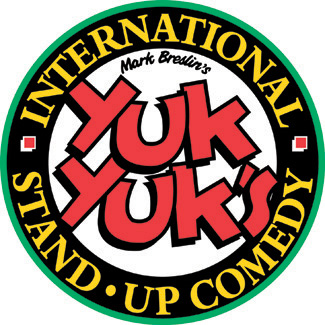
Comedy visionary Mark Breslin opens the original Yuk Yuk’s in the basement Pine Room of The 519, featuring performances by Howie Mandel and Jim Carrey.
1977
At the second Annual Meeting, The 519 passes a resolution recognizing the rights of people experiencing homeless in the neighbourhood to legitimate use of the centre. In the May newsletter, Millie Greenfield, a member of the North Jarvis Community Association, urges members not to “disregard the activist political roots from which we have grown.”
1982
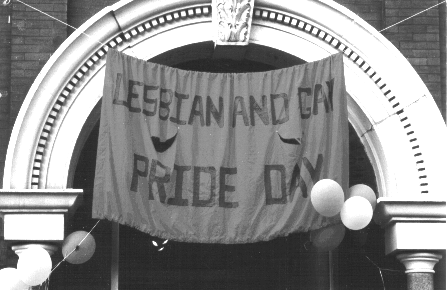
Following the infamous bathhouse raids by Toronto police, the Right to Privacy Committee and Gaycare are developed, bringing many 2SLGBTQ+ advocacy groups to The 519.
1984
The Hassle Free Clinic holds its first ever meeting at The 519, and goes on to establish free medical and counselling services in sexual health. The 519 also launches Zami, an interactive support group for 2SLGBTQ+ Black and West Indians communities.
1987
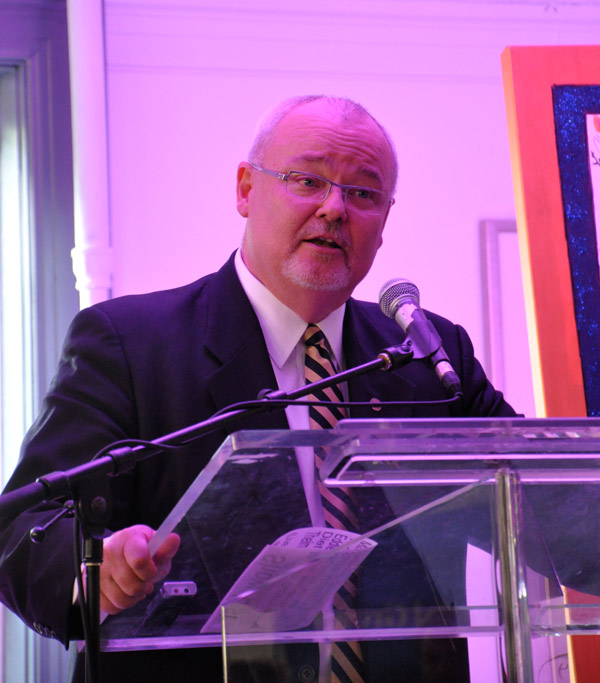
Kyle Rae becomes Executive Director of The 519. The City of Toronto agrees to provide funding to make the building wheelchair accessible.
1990
The 519’s request to the City’s Personnel Committee results in the extension of benefits to same gender spouses of City of Toronto employees, including those who work at The 519.
The Board’s Fundraising Committee focuses its efforts on developing corporate sponsorships, and reports some early signs of interest. The biggest donation from a business is $2,000 from Chaps, a popular gay bar on Isabella Street.
1993
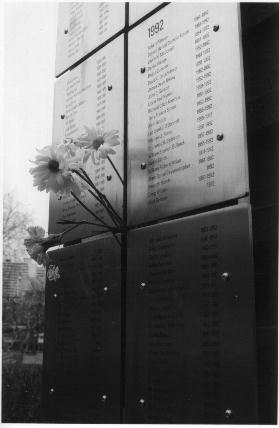
The AIDS Memorial designed by Toronto-based architect Patrick Fahn is unveiled in Cawthra Park, the result of a program run through The 519.
1994
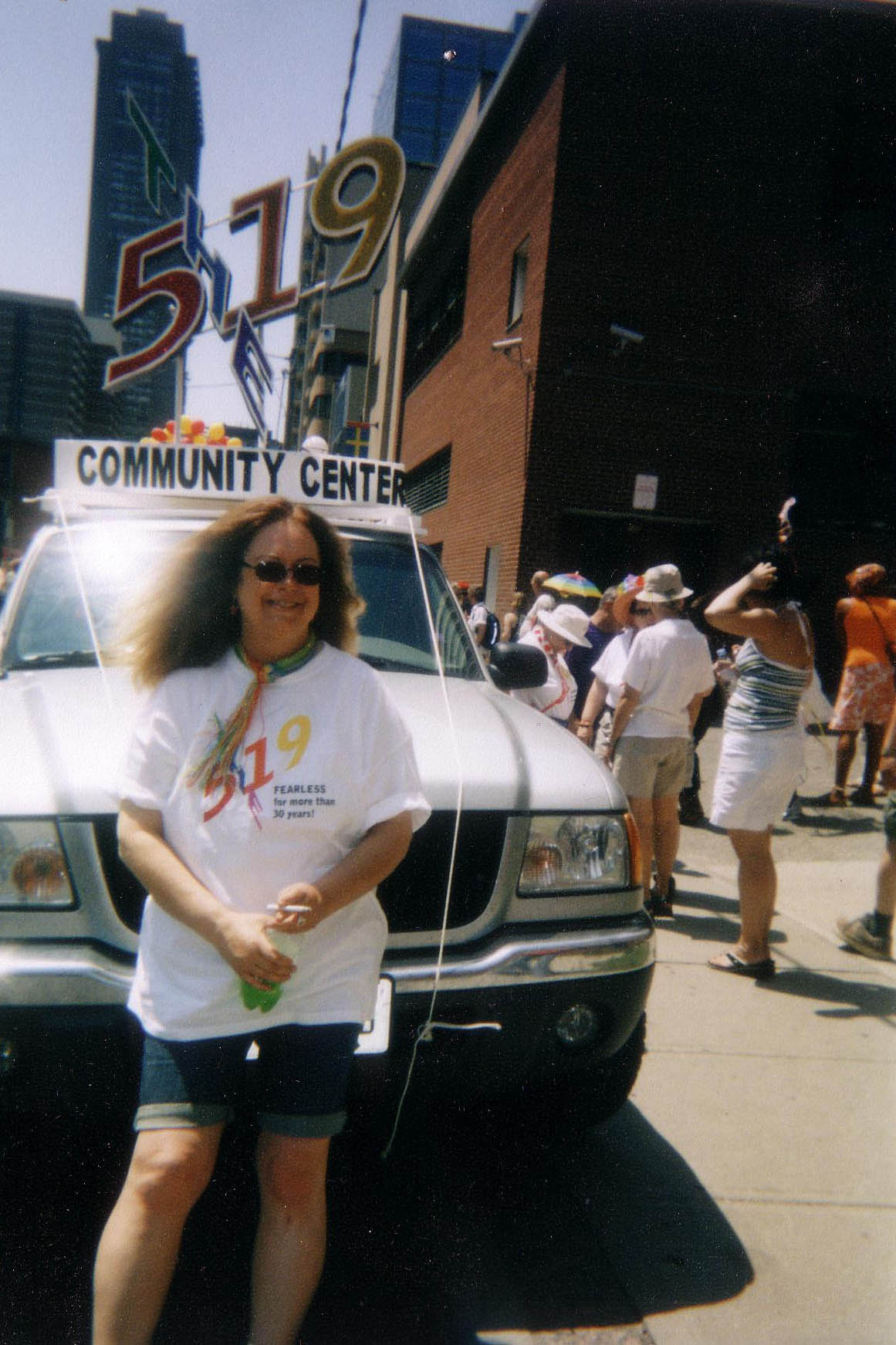
Communities involved in the Campaign for Equal Marriage gather at The 519 every night in May and June before 10,000 people take to the streets on June 9th to protest the defeat of Bill 167, which would have provided same-gender couples with rights mostly equal to opposite-gender common law couples.
1998
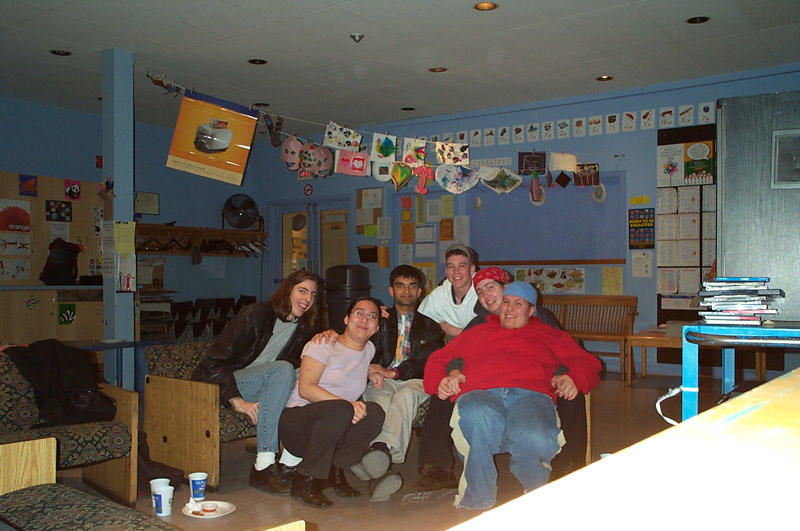
The Meal Trans Program is developed as the first trans program run by The 519, offering low income individuals with nutritious food.
2001
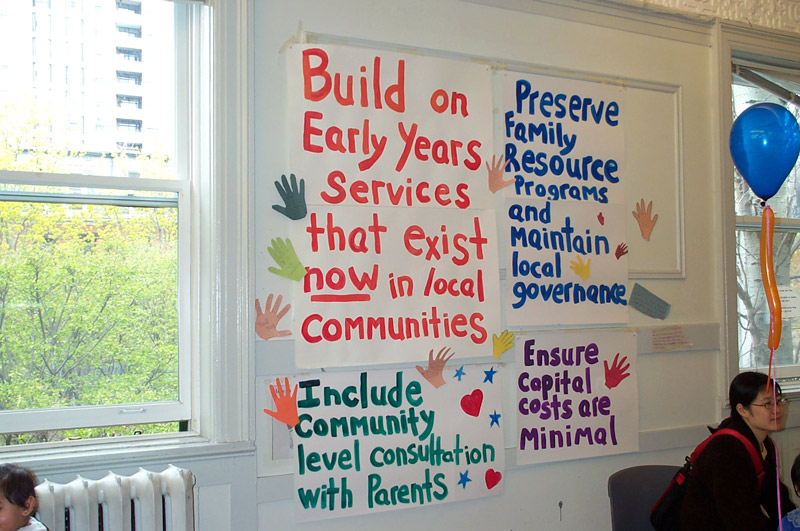
The 519 partners with the Toronto District School Board to create Families Against Homophobia, a curriculum that acknowledges children with parents from 2SLGBTQ+ communities.
2002
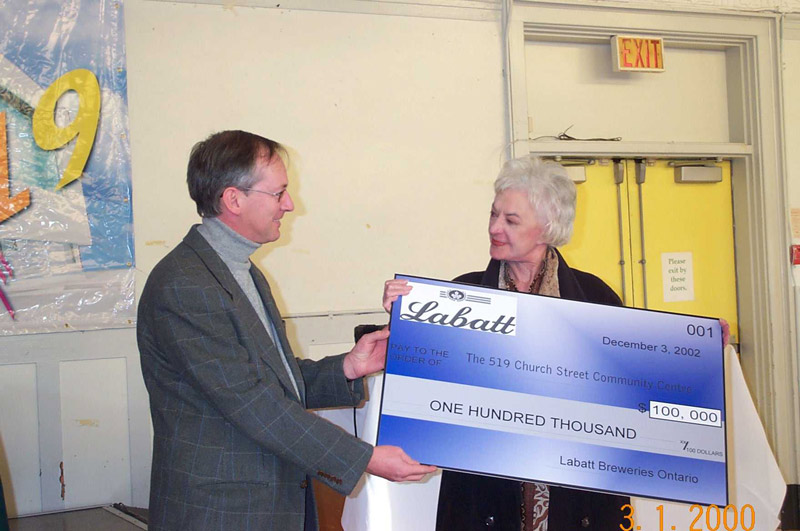
Bea Arthur hosts an event and accepts ceremonial cheques for The 519’s capital campaign from Labatt Breweries and Rogers Communications.
2005
The 519’s Anti-Poverty and Homeless Program serves more than 2,500 meals, hands out close to 6,000 changes of clothing, and facilitates more than 3,000 medical service visits through a partnership with the Sherbourne Health Bus.
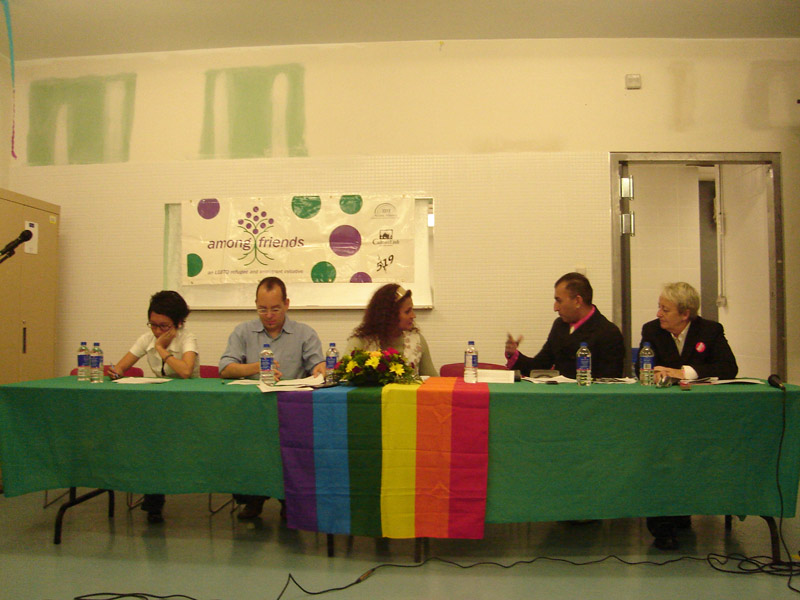
A year after launching the first Canadian pilot program for LGBTQ+ refugees, The 519 produces a manual for LGBTQ+ refugees and services providers, Among Friends with funding from The City of Toronto, RBC Financial and the Alliance for South Asian AIDS Prevention.
2007
The Older 2SLGBTQ+ Program collaborates with the City of Toronto Long-Term Care Homes and Services Division to develop a toolkit for making inclusive and affirming long-term care facilities, and trains more than 400 staff and residents.
2008
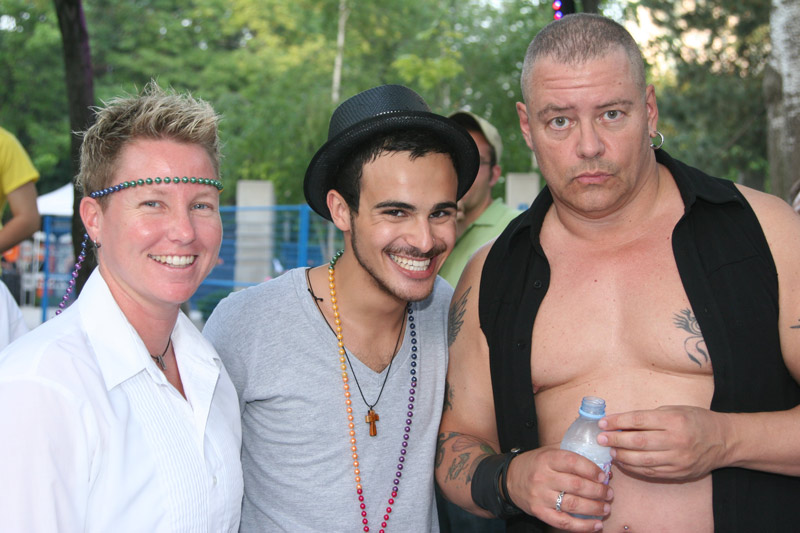
The 519 hosts the first Starry Night, a signature event that kicks off Pride weekend and raises money for programming at The 519 through an elegant party with celebrities, community leaders, and spectacular performances.
2010
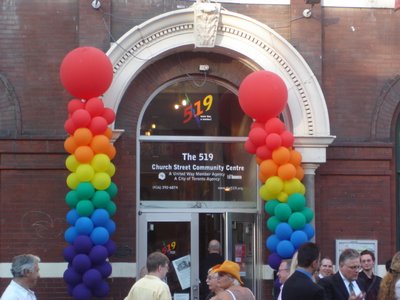
The 519 celebrates a grand reopening after an extensive renovation led by Toronto philanthropist and leading member of the 2SLGBTQ+ community, Salah J. Bachir, CM OOnt. The expansion includes the new Fabarnak Restaurant, a social enterprise and catering service that helps people facing employment barriers gain work experience.
2013
The 519 successfully submits a report to Toronto City Council seeking authorization to develop a sport and recreation centre aimed at promoting 2SLGBTQ+ inclusion in sport.
2014
The 519’s refugee, newcomer and settlement program serves 5,304 participants, welcomes 682 new clients, and engages 227 newcomer volunteers in roles that introduce them to new skills and makes them feel welcome as part of Toronto’s 2SLGBTQ+ community.
The 519 launches its 2SLGBTQ+ Workplace Inclusion Curriculum, offering workshops to more than 500 front line staff, executives, managers and human resources professionals in offices and work environments across Toronto. The Hear It! Stop It! campaign asks participants to help eliminate homophobic and transphobic language.
2015
The 519 hosts and becomes the trustee of the PrideHouse Toronto initiative, a collaborative of 15 organizations working together to ensure the 2015 Pan Am/Parapan American Games are the most 2SLGBTQ+ inclusive multi-sport Games in history.


